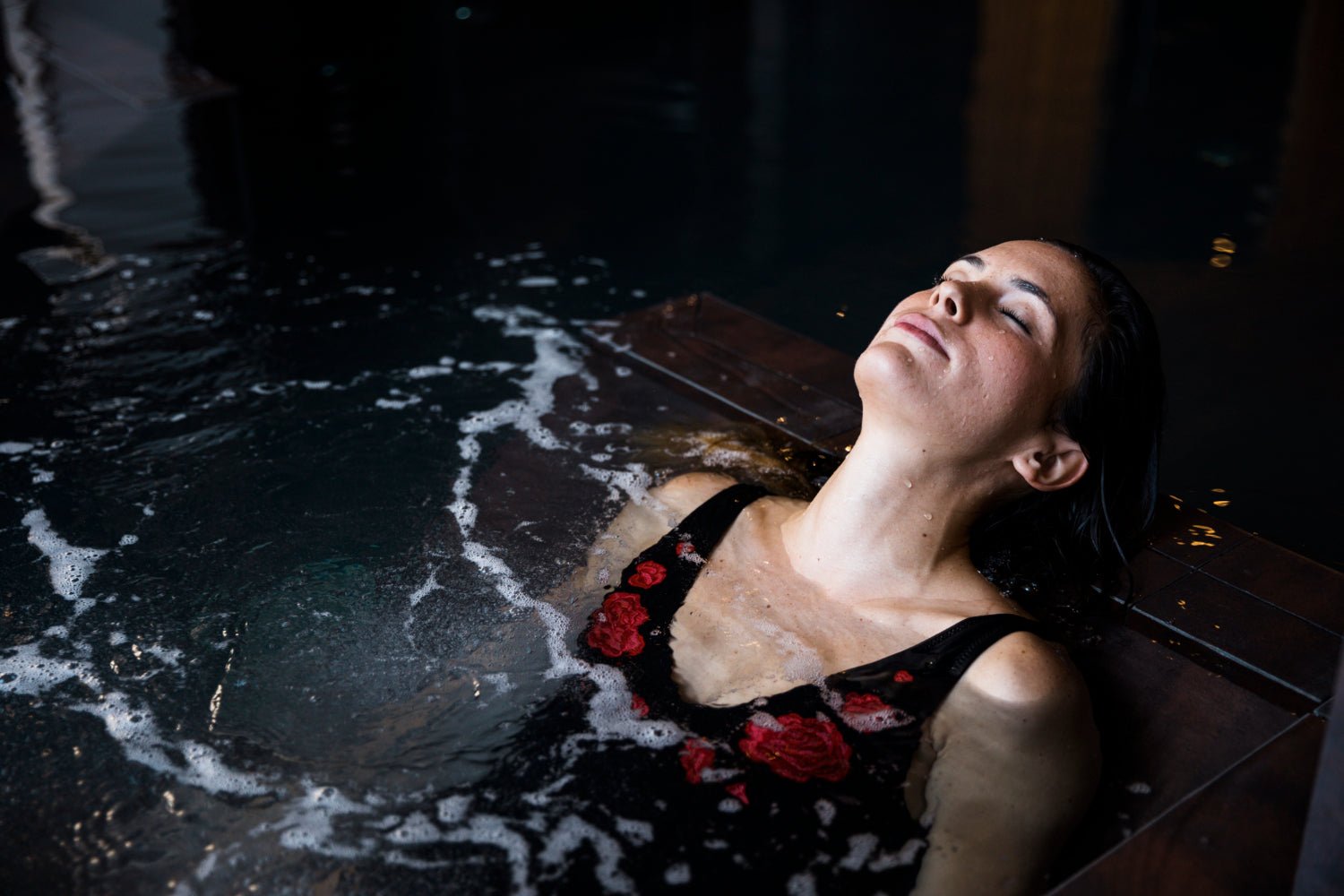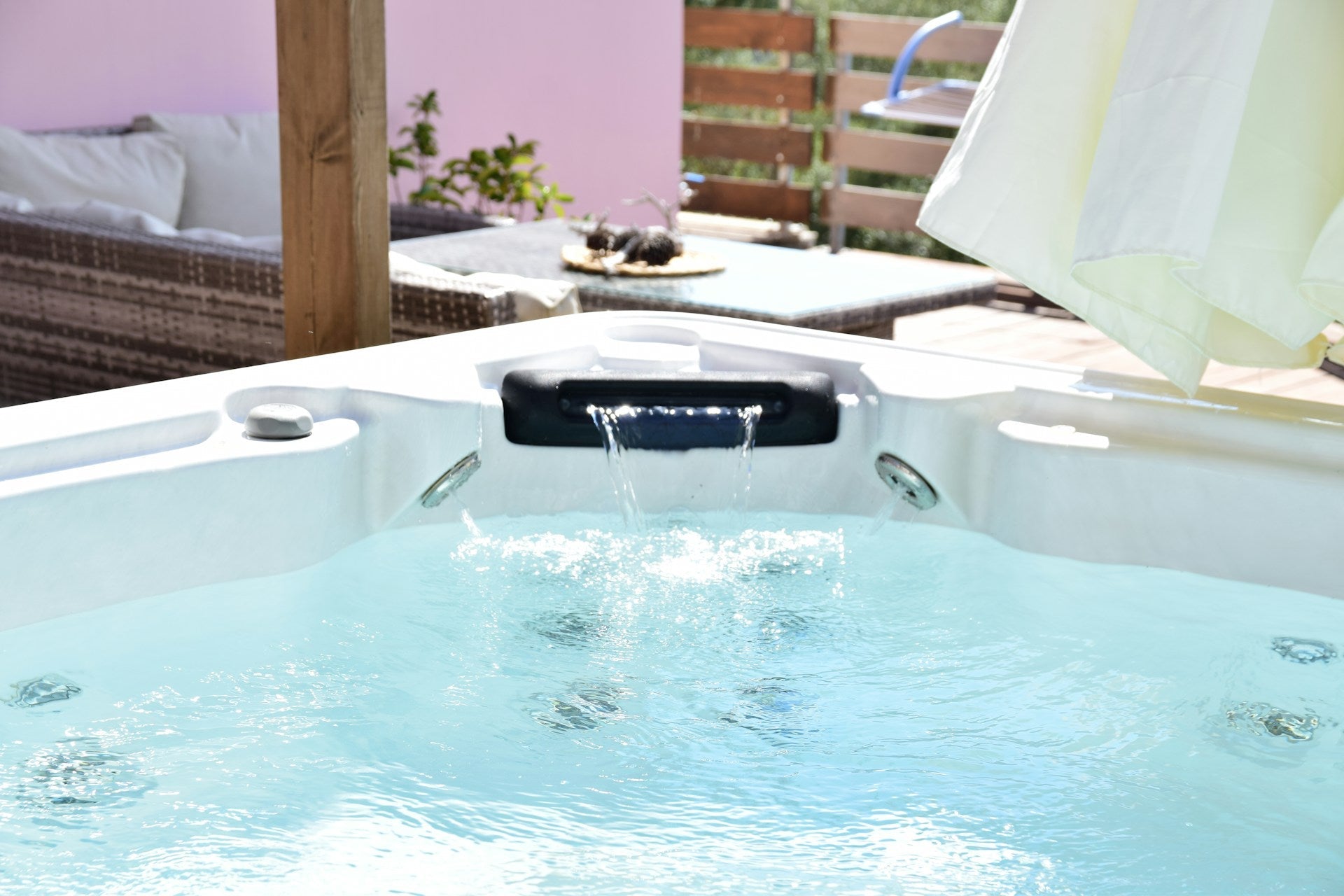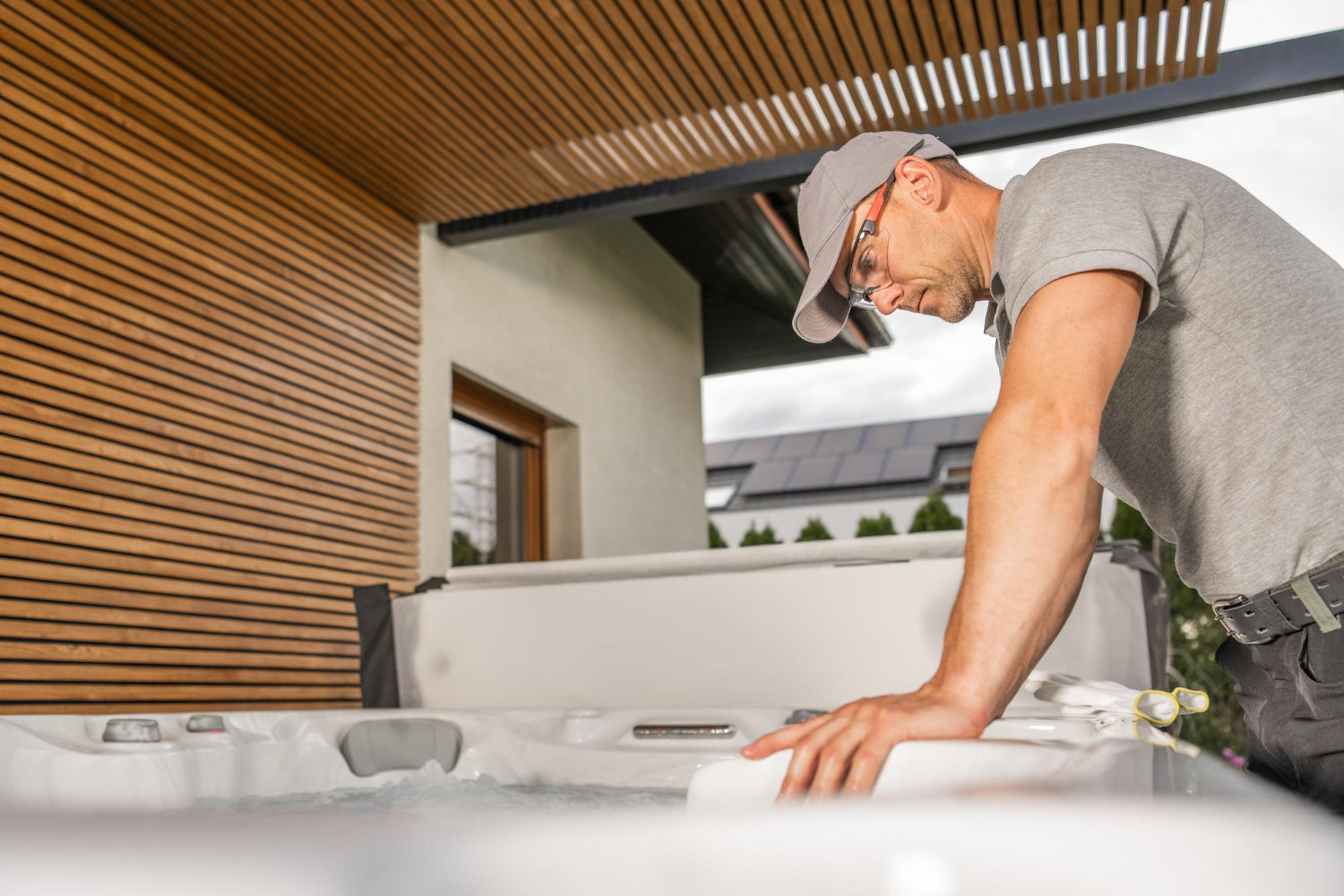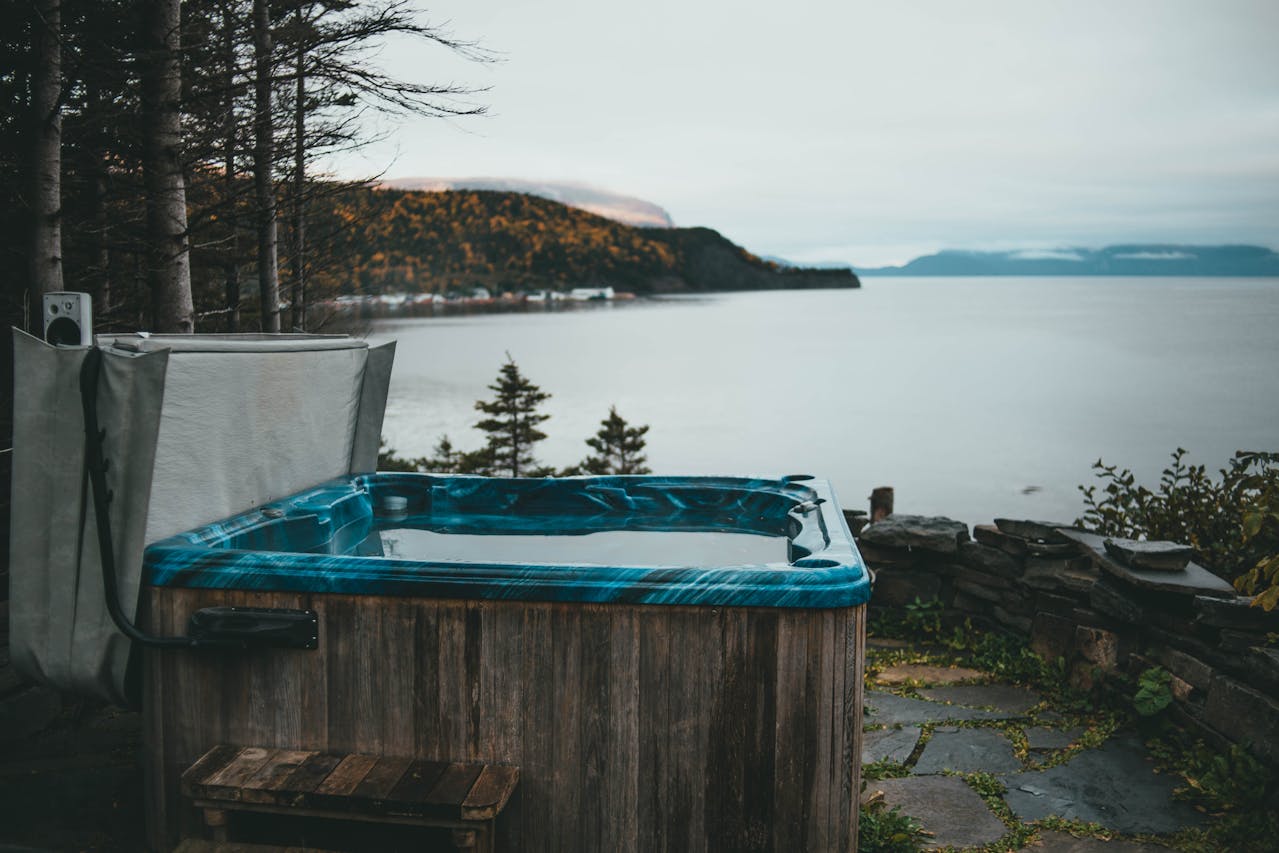Eco-Friendly Hot Tub Solutions to Lower Energy Costs

Eco-friendly solutions for hot tubs not only help the environment but also offer a practical way to lower energy costs. As we look to reduce our ecological footprint, incorporating sustainable practices in our hot tub maintenance can make a significant difference. By focusing on energy efficiency and water conservation, we can ensure our relaxing retreat is both economically and environmentally friendly.
One effective way to achieve this is by selecting the right products and making simple upgrades to our hot tub setup. Energy-efficient covers, improved insulation, eco-friendly heating options, and water conservation techniques are all essential components in this process. Each of these elements plays a crucial role in reducing the overall energy consumption of our hot tub, leading to substantial cost savings over time.
By implementing these eco-friendly strategies, we not only support a greener planet but also enjoy the added benefit of lower energy bills. This guide will explore various methods to make our hot tub more sustainable while maintaining the comfort and relaxation we cherish.
Let's dive into how we can transform our hot tub into an eco-friendly haven that aligns with our commitment to environmental responsibility!
Energy-Efficient Hot Tub Covers
Choosing an energy-efficient hot tub cover is a simple yet effective way to reduce our energy bills. A good cover not only keeps debris out but also holds in heat, minimizing the amount of energy needed to maintain the water temperature.
1. Material Matters:
- High-Quality Foam: Look for covers made from dense, high-quality foam that offers excellent insulation. These covers trap heat more effectively, reducing the amount of energy the hot tub needs to reheat the water.
- Durable Vinyl: The outer layer should be made of durable, weather-resistant vinyl. This material protects the foam core from water and UV radiation, extending the cover’s lifespan and maintaining its insulating properties.
2. Proper Fit:
- Custom Fit Covers: Ensure the hot tub cover fits snugly over the tub. A well-fitted cover prevents heat from escaping through gaps, making our hot tub more energy-efficient.
- Locking Mechanisms: Look for covers with secure locking mechanisms that hold the cover tightly in place, further preventing heat loss and adding a layer of safety.
3. Additional Features:
- Reflective Surfaces: Some covers come with reflective surfaces that direct heat back into the water, increasing their efficiency.
- Tapered Design: A tapered design allows rainwater and snow to run off easily, preventing water accumulation that can degrade insulation performance.
Investing in an energy-efficient hot tub cover not only lowers energy costs but also extends the life of our hot tub by protecting it from the elements.
Insulation Upgrades for Better Heat Retention
Upgrading our hot tub’s insulation is another effective way to enhance energy efficiency. Better insulation reduces heat loss, meaning the hot tub requires less energy to keep the water at the desired temperature.
1. Full-Foam Insulation:
- Complete Coverage: Full-foam insulation involves filling the entire cabinet of the hot tub with high-density foam. This method provides comprehensive coverage, reducing heat loss from the sides and bottom.
- Benefits: Full-foam insulation not only retains heat better but also adds structural support to the hot tub, helping to prevent leaks and damage over time.
2. Thermal Blankets:
- Lightweight and Effective: A thermal blanket floats on the surface of the water, creating an additional barrier that traps heat. Made from insulating materials, these blankets are lightweight and easy to use.
- Energy Savings: Thermal blankets can reduce heat loss by up to 95%, significantly cutting energy costs.
3. Insulated Cabinet Panels:
- Removable Panels: Look for hot tubs with insulated cabinet panels that can be easily removed for maintenance while providing excellent heat retention.
- Aerogel Insulation: Some high-end hot tubs use aerogel insulation, a highly efficient material that offers superior thermal resistance. Aerogel panels can significantly improve energy efficiency and are particularly useful in colder climates.
By upgrading the insulation of our hot tub, we can enjoy a more energy-efficient and cost-effective spa experience. These enhancements help maintain the water temperature for longer periods, reducing the workload on the heating system.
Eco-Friendly Heating Options
Choosing eco-friendly heating options for our hot tub can greatly reduce energy consumption. There are several green heating solutions available that help keep our hot tub warm while minimizing environmental impact.
1. Solar Heating:
- Renewable Energy: Solar heaters use energy from the sun to warm the water, making them a sustainable option. Solar panels can be installed on rooftops or near the hot tub.
- Cost Savings: Although the initial installation cost might be higher, solar heating systems often pay for themselves over time through energy savings.
2. Heat Pumps:
- Efficiency: Heat pumps transfer heat from the air or ground to the water. They are more efficient than traditional electric heaters, using less electricity to achieve the same level of heating.
- Environmental Benefits: Heat pumps produce fewer carbon emissions compared to standard electric or gas heaters, making them an environmentally friendly choice.
3. Wood-Burning Heaters:
- Natural Fuel: Wood-burning heaters use logs as a fuel source, which can be a renewable resource if sourced sustainably.
- Off-Grid Option: These heaters are ideal for locations without easy access to electricity or gas, providing a reliable heating solution.
Choosing one of these eco-friendly heating options helps reduce our carbon footprint while keeping energy costs manageable, ensuring our hot tub remains an eco-conscious haven of relaxation.
Water Conservation Techniques for Hot Tubs
Conserving water is another crucial aspect of maintaining an eco-friendly hot tub. Implementing water-saving techniques can help us use this precious resource more wisely while also reducing our utility bills.
1. Use a Cover:
- Preventing Evaporation: Covering the hot tub when it’s not in use can significantly reduce water evaporation. This simple step can save a substantial amount of water over time.
- Keeping Debris Out: A cover also keeps dirt, leaves, and other debris out of the water, reducing the need for frequent cleaning and water replacement.
2. Maintain Water Chemistry:
- Proper Balance: Keeping the water chemistry balanced reduces the need to drain and refill the hot tub. Regularly testing and adjusting chemicals ensures the water stays clean and safe.
- Quality Filters: Using high-quality filters helps maintain water clarity and cleanliness, decreasing the frequency of water changes.
3. Recycle Water:
- Reuse for Plants: If we need to drain the hot tub, consider reusing the water for non-potable purposes like watering plants or cleaning outdoor areas.
- Proper Disposal: Ensure any water drained is disposed of responsibly, avoiding contamination of local water sources.
By implementing these water conservation techniques, we can maintain an eco-friendly hot tub that benefits both our wallet and the environment.
Sustainable Relaxation: Eco-Conscious Hot Tubbing
Incorporating eco-friendly solutions for our hot tub helps reduce energy costs and lessens our environmental impact. From choosing energy-efficient covers and upgrading insulation to exploring eco-friendly heating options and practicing water conservation, these steps make our hot tub more sustainable. Each small change adds up, creating a more enjoyable and cost-effective hot tub experience.
By adopting these eco-friendly practices, we can enjoy our hot tub without worrying about high energy bills or harming the environment. Ready to make your hot tub more eco-friendly? Discover innovative hot tub gear you'll be proud to use with TUBTEK.




